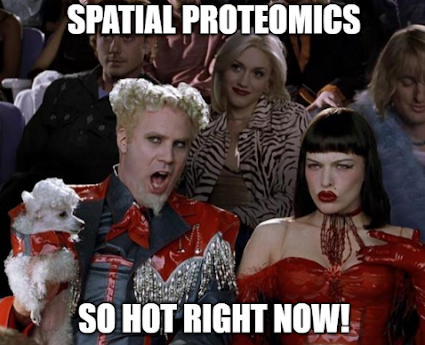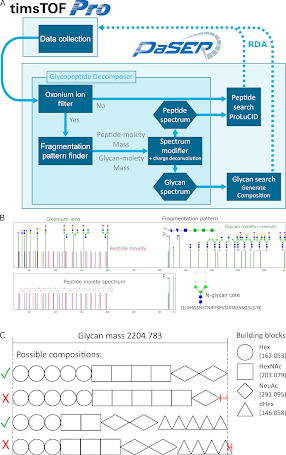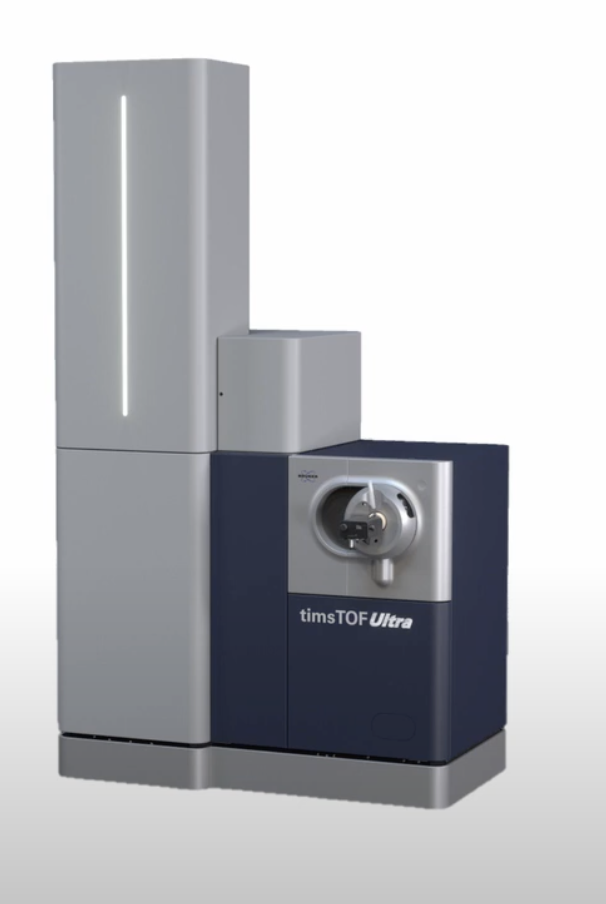Please note: Errors/corrections to image above that I'll fix when I'm back in the right office.
Corrections to original post include:
1) FAIMS Pro is available for the Asstral
2) There is only one "s" in Asstral.
3) The thing on the far right is a ZenoTOF (originally copy/pasta error said TIMSTOF)
4) Resolution on the Ultra is incorrect -- the specification sheet says 60,000. Which would almost double my throughput because I should be able to use all TMTPro reagents -- and I could use the whole CellenOne ProteoChips AND the full nPOP workflow. HUGE. Dying to see data. I might need to fly to Boston.
Now that every vendor has embraced Time Of Flight technology fully, it's time to do a completely inaccurate roundup of where, I believe, they stack up right now.
Disclaimers over there somewhere, 100% apply here. ---> Also, I'm running off of basically rumors here. Please consider this post completely unsubstantiated (actually, probably all of the posts on this blog!).
What a fun time it must be to be doing instrument demos to send that amazing old Orbi Velos out to the desert!
In no particular order, let's list off some things that you might want your next proteomics instrument to have or do.
1) Is blue and grey your thing? Do I ever have news for you? Any of these instruments will fit in with Yale or UCLA themed walls (I don't know if those are actually those school colors). Winner? Tie!
2) Have you been turned off by TOFs in the past because of the lack of ion accumulation? Me too! But that's the whole point. All 3 of these next generation TOF instruments have cool ways of accumulating ion signal prior to TOF, which circumvents most of the reason that TOFs basically died out for proteomics in the first place. Worth noting, the ZenoTOF (for reasons I do not fully understand) only ion accumulates for MS/MS, but PRM and DIA are just fine. I think we don't have enough information yet for the sensitivity game, but both the Ultra and OrbiTOF are getting huge numbers of proteins in single human cells. With the IonOpticks team taking building a nanospray source for the ZenoTOF into their own capable hands, I suspect we'll hear some ridiculous numbers from that combination soon as well.
For now, no score!
Let's start with the obvious:
Are you obsessed (for valid reasons or not) with mass resolution? The OrbiTOF really stands on its own out there with a high field Orbi stuffed in one side of it and a surprisingly high resolution TOF on it's butt. 1 point to the OrbiTOF!
Are you more obsessed (for valid reasons or not) with ion mobility separation? If so, you do have FAIMS as an option for the OrbiTOF, but I don't think it was used in the preprints I've read so far. Even with FAIMS pro, it is basically a +1 filter, which is super valuable. The TIMS has way more resolution. 1 point for the Ultra!
Do you need MSn? Well, you're out of luck here. These are all MS2 devices. Don't let them haul off that Orbi Velos yet! 1 point for the Orbi Velos! Or LTQ or Fusion system.
However, if you want multiple collision energy types, the ZenoTOF is in the fight. I suspect some big time EAD papers in the near future because it is efficient and very very fast. 1 point to the ZenoTOF!
Speed? This is crazy because last year around this time the ZenoTOF was the fastest name in the game and now it appears to be third? Wow, right? I'd like to some more data out of all of them, but from marketing it looks like the Ultra is the fastest right now (300 Hz? WTaF?) but at slightly less (see edit above) than the OrbiTOF. I can not wait to see this preprint. Heck, I'll help you write it if you need help. Trip to Boston time? 1 point for the Ultra!
Software compatibility? It depends on that application, I guess, but I do think that Thermo really does have a lead here. The majority of the software in the world can read a Thermo.RAW file. If you're doing DIA, these are all SpectroNaut and DIA-NN compatible. Skyline can process the data. I think the ZenoTOF might have some limitation with FragPipe for DDA that I'm not sure if it has been resolved yet. I think this point would go to the OrbiTOF for this big reason:
The real achilles heel of the TIMSTOFs in general is that it is very hard to dig into the data to look for specific targets. For example, if you wonder if your peptide is there and it didn't get identified, it is really hard to look through the TT data to find a mass spectrum to look at. When someone fixes that, they'll get 10k citations in about 5 years and I'd have to neutralize this one out. If you've been looking at SCIEX data in the past, you know how to deal with those data. I'm going to narrowly give this point to the OrbiTOF.
HPLC compatibility? This one is easy -- unless you've got a Vanquish Neo. I don't know why, but even Thermo's HPLCs are more compatible and work easier with the TIMSTOF software. Open the driver, checkmark the HPLC, hit apply, done. Agilent, Dionex, Proxeon (I don't know about Waters, we don't have that combination on campus), EvoSep. Point to the Ultra. (Neo doesn't play with Bruker, you can always contact closure, but you can do that with anything)
Top down/intact protein capability? There is a Biopharma option for the Astral, so $$$ and the ZenoTOF can do native protein work (m/z goes to 60,000 or something) but that might have $$ attached, I don't know. Surprisingly the new TIMSTOF control software has default workflows for mAB characterization, which I did not think was possible. Strangely, I guess this is a tie somehow.
Footprint? These are all TOFs and sorta big, but none are huge. All are smaller than your Orbi Velos. The ZenoTOF is the smallest. Point to ZenoTOF?
Autocalibration for proteomics? The TIMSTOF is pretty close to autocalibrating, but I don't think it can do it yet. The air filters are really handy for being able to quickly check if your mass and TIMS are behaving, but the ZenoTOF and OrbiTof both get a point.
Did that tie it up? I figured ending it that way would get me fewer phone calls about this post, PLUS it is now all application specific and personal preference. Are you unwilling to learn a new vendor solution? Great time to be you! Everyone hasa powerful new things.
I also didn't think I knew enough about the other vendors to throw them in here.
The instrument vendors are the only ones that benefit by our somewhat unique obsession, as a field, about hardware. People are so diehard that sometimes you've got to move your study to a different journal if you land on the wrong reviewer and you use the wrong instrument. My wife made a lot of fun of Thermo DNA/RNA sequencers for some reason when she was in a lab in grad school that had everything. Something about voltage differentials. So maybe it is all the -omics people and not just us.
In the end these are measurement devices and we don't get all riled up about which scales we are using to weigh reagents. (Unless you are getting an ISO audit! My gosh. We bought a new scale that came with an ISO-6001 calibration, not an ISO-17025 calibration and if we hadn't found a guy who would jump in his car immediately for and recalibrate it in returns for roughly what the scale cost, we wouldn't have been allowed to run samples. So that's a bad example?
You'll note I didn't give a point for price. I don't know what those numbers really are, I've just heard rumors and I bet vendors are feeling people out right now on what they would be willing to pay. I expect those to be pretty unstable for a while.
These are really cool, very sensitive, very fast, very capable measuring devices and it is great time to upgrade your performance by just swapping in a different box and changing nothing at all. However, the coverage coming in from every direction from every instrument (thanks in almost just as big part by better sample prep and fancy new informatics) is crazy right now. We right up and went all exponential growth phase a while back after kind of leveling out for a few years.
I (and our reviewers, I think) would still much rather see a super smart biological study with a well-thought out experimental design on a Q Exactive or Synapt or 6490 or TIMSTOF Pro or 6600 than read a "we mixed HeLa with yeast and Arabidopsis and got 24,000 proteins quantified" or something. But with the unproven tools like O-link and SomaScan out there bashing us and eating our lunch money without solid quantitative assessment of the values they return, this shiny new stuff and the press noise they're generating is coming at a good time.
NOW we just need to get some super high n biological cohorts out and more proof that proteomics by mass spectrometry is a valid and valuable tool to help people!







































